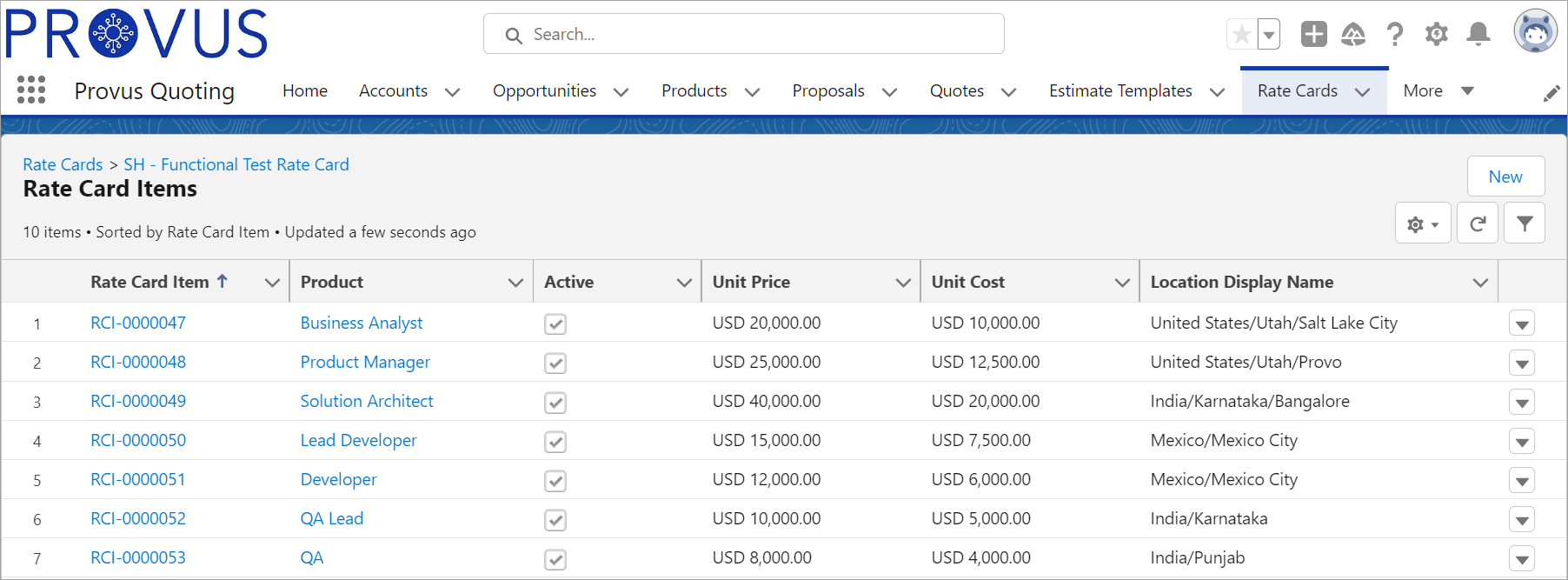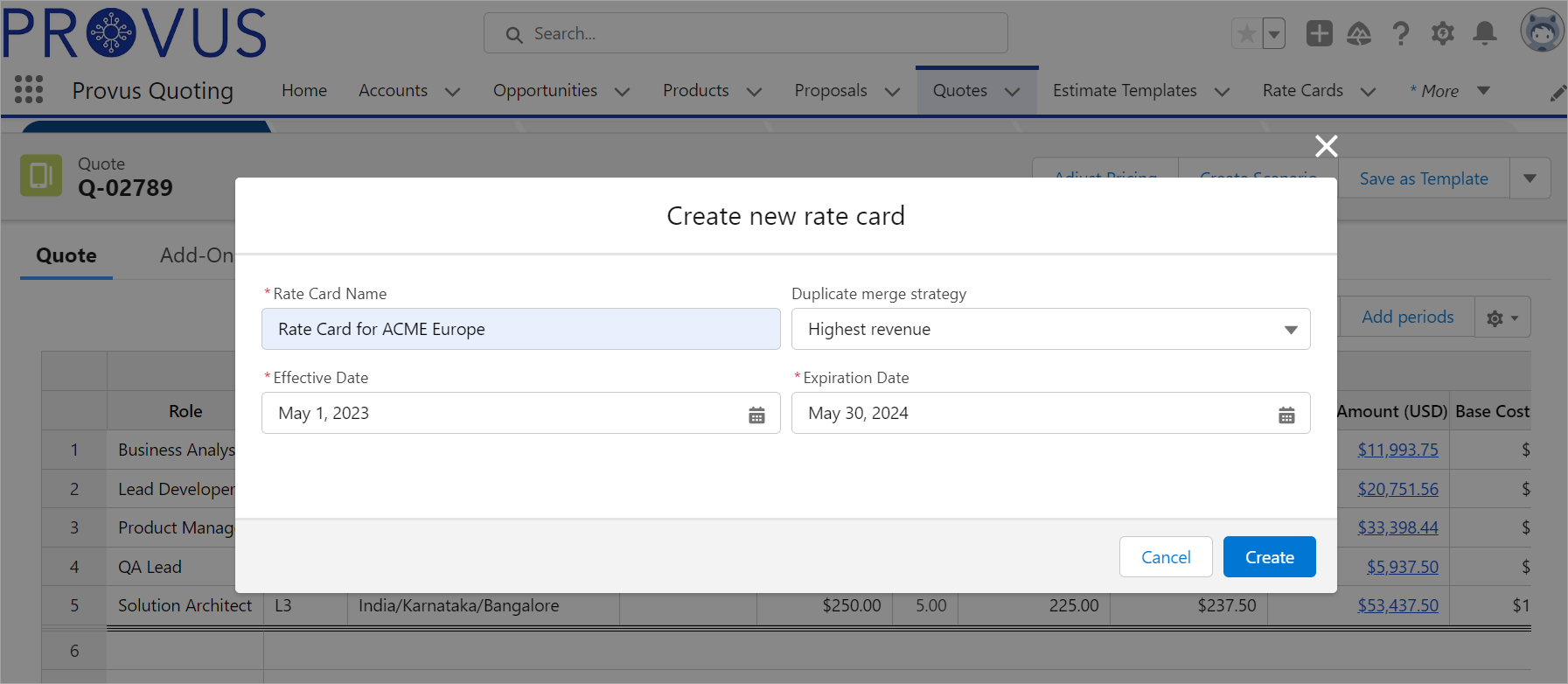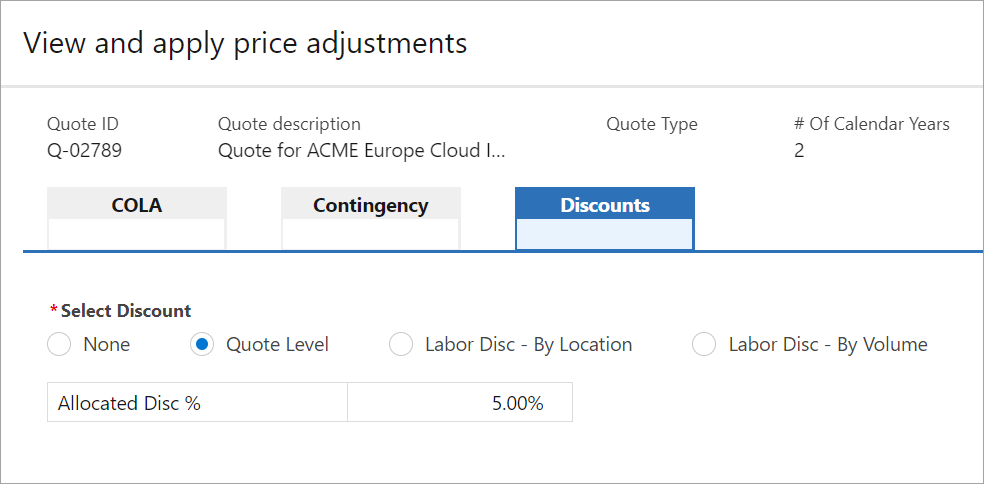The services business is generally associated with very thin margins. Maintaining margins becomes a much bigger challenge while negotiating customer rate cards, Master Service Agreements, and complex multi-year global deals with enterprise customers. The key challenges include rising inflation and general costs of living, ambiguous and unknown scope at the time of deal negotiation, availability of the right skilled resources at the right time, and change in customer plans based on macro-economic changes. Accordingly, deciding the right pricing strategy and incentive structures becomes very important to manage the associated margin risks.
Provus Pricing and Adjustments solution for complex services provides a sophisticated pricing framework and engine that makes it easier for services companies (IT Consulting, professional services, and Asset-Based Services) to prevent margin leakage while negotiating complex deals.
The Pricing framework enables precise pricing negotiations based on location, headcount, volume, time periods, and resource roles. It also facilitates creating multiple revenue and margin scenarios for comparison and real-time impact analysis across various dimensions.
The solution provides a number of tools to negotiate Customer Rate Cards, Fixed Bid or T&M projects, as well as long-term Master Service Agreements.
Base and Customer Specific Rate Cards
You can manage your base rate cards for resources as well as negotiate customer-specific rate cards for Time and Material current projects as well as for future deals using flexible rate card capability.
- Customized Base Rate Cards: Provus provides services companies with flexible ways to manage their base rate cards by location for each resource, skill level, and other factors.
- Cost of Living Adjustments: Companies can also manage Cost of Living Adjustments (COLA) for multiple years that not only can be used for accurate cost considerations but also for adjusting and negotiating future rate cards.
- Resource Level Discounts: Discounts for the rate cards can be negotiated from the quote level down to the individual resource and period level.
- Generate Customer Rate Card from Quotes: Once you have negotiated resource rates and related details, you can easily generate a customer rate card for future projects from the same quote.
 Rate Cards
Rate Cards
 Cost of Living Adjustments / Inflation
Cost of Living Adjustments / Inflation
 Discount
Discount
 Create New Rate Card from the Quote
Create New Rate Card from the Quote
 New Rate Card Created
New Rate Card Created
Fixed Bid Projects – Risk Contingencies
Fixed bid projects come with a very high risk to cost and margin. It becomes important to account for these risks in rate cards before negotiating deals with customers to maintain margins.
- Fixed Price Contingency: With the new solution, Provus provides the flexible capability to include risk contingency with granular controls on rate cards and customer deals. The risk contingency can be applied as % or a fixed value to the overall deal or different amounts for labor vs add-ons. You can also see the impact of contingency on revenue and margin immediately.
- Risk-Adjusted Rates: Risk-adjusted rate cards can then be used to negotiate the deals.
 Margin Before Applying Contingency
Margin Before Applying Contingency
 Apply Contingency
Apply Contingency
 Margin change after applying Contingency
Margin change after applying Contingency
Flexible Discount Negotiation Strategies
Provus pricing solution supports a number of very flexible discount negotiation strategies to achieve desired business outcomes.
- Quote Level Discounts: Negotiate discounts at the overall deal level as a % or fixed amount to get to a customer’s expected budget.
- Labor vs Add-ons Discounts: Use this option to negotiate different discounts for the labor vs add-ons portion of the deal as a % or fixed value as well as see the impact in real-time.
- Location Mix-Based Discounts: To encourage a certain resource mix including onshore/nearshore /offshore ratios of resources, you can use a location-based discounting structure at the country, state, or even city level.
- Headcount-Based Volume Discounts: To encourage overall higher headcount for resources or to maintain a certain threshold across different periods including years, quarters, months, or weeks use the option to have volume discounts by headcount-based tiers.
- Revenue-Based Volume Discounts: You can also maximize the revenue by incentivizing customers based on revenue-based tiers that can also be negotiated by time periods including years, quarters, months, or weeks.
- Resources-specific discounts and markups: You can achieve More granular negotiation and analysis by focusing on individual resources and specific time periods. This approach allows for a deeper examination and understanding of each resource and its potential impact on the overall negotiation or analysis.
- Quoted amount rounding: You can also utilize good faith rounding to determine the final customer expected amount after all other relevant negotiation factors are taken into account. It involves rounding the calculated price or total to a clean, rounded number that is more customer-friendly and easily understood.
Master Service Agreements (MSAs) – Commitment-Based Discounting
Companies and customers both look to lock in multi-year MSA or Time & material contracts. Along with negotiating the base rate cards, companies can also negotiate milestone-based credits and rebates based on achieving pre-defined revenue or headcount thresholds for a given location or time period. These MSAs can further be used to negotiate short-term fixed bids or time & material contracts.
 Quote Level Discount
Quote Level Discount
 Labor Discount – By Location
Labor Discount – By Location

Labor Discount – By Volume

What-If Scenario Modeling
While negotiating bigger deals, there is a level of tension among internal stakeholders including Sales, Delivery, and Finance to meet customers’ expected budget, maintain margins, and maximize revenue, while keeping delivery risk low. To optimize these aspects while negotiating deals, Provus pricing solution provides “What-If” scenario capability, where you can easily create multiple what-if scenarios with different pricing strategies, compare them side-by-side to make decisions, and even submit multiple of these for approval. The approved scenario will become the primary quote.


Final Takeaway: Make informed and intelligent decisions with Provus Pricing for Services
Preventing margin leakage and risk in the services business is a hard challenge. Let us help you simplify and automate deal negotiations with Provus Pricing Solution, as you scale your business. Contact us for a demo and POC specific to your business.








